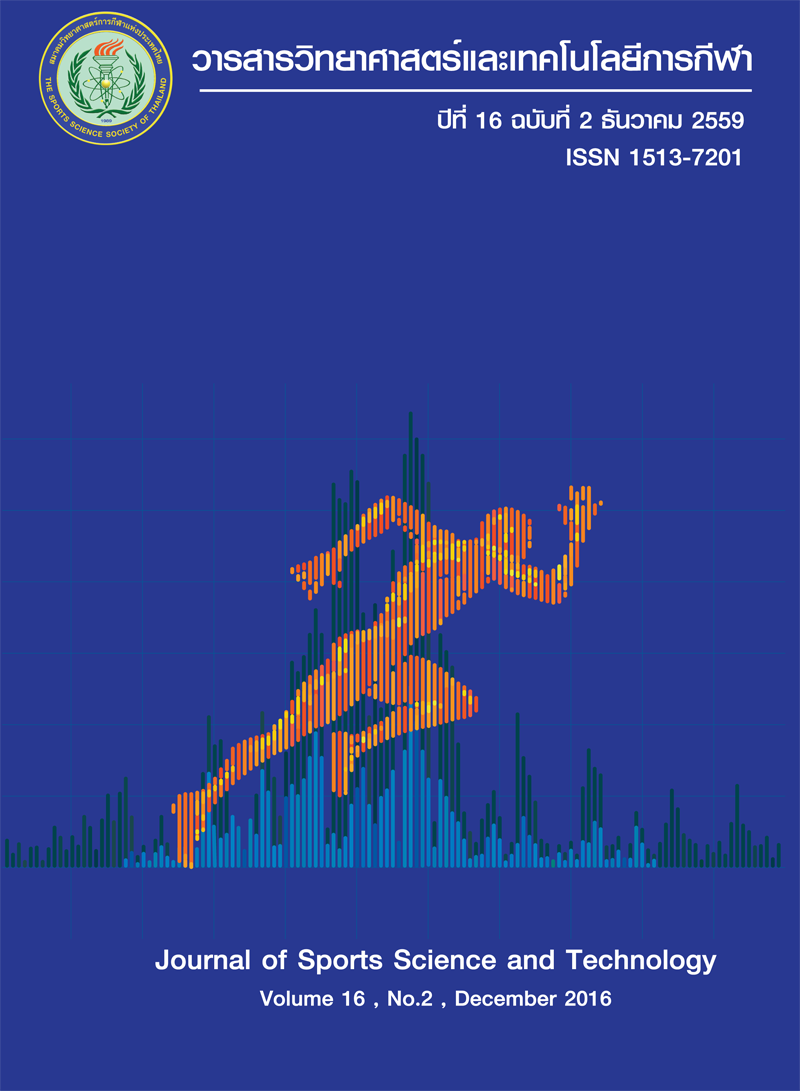Knee Joint Biomechanics during different Sepaktakraw Spike Take-off
Abstract
The purpose of this study was to investigate knee joint kinematics during three different sepaktakraw spikes takeoffs. Twelve male collegiate sepaktakraw athletes (mean age = 19.92 ± 3.03 years,mean weight = 60.67 ± 6.75 kg and mean height = 1.69 ± 0.07 m) volunteered in this study. Ten optoelectronic cameras synchronized with a force platform were used to collect the data. Three different types of sepaktakraw spike including roll-spike (RS), half-roll spike (HRS) and sunback spike (SS) were
randomly performed. Five successful trials were averaged. One-way repeated measurement ANOVA showed significant difference of knee joint rotation at initial contact among three spikes (p<0.05). The Friedman test
showed significant difference of knee joint flexion range of motion at initial contact to peak vertical ground reaction force phase among three sepaktakraw spike takeoffs (p<0.05). HRS takeoff demonstrated the
greatest knee joint flexion range of motion (22.82±8.07, 30.84±9.07 and 27.06±7.12 deg in RS, HRS and SS,respectively). The knee joint angle velocity was no significant differences among three sepaktakraw spike
takeoffs. In conclusion, RS generated the greatest knee joint internal rotation at initial contact as compared to HRS and SS takeoffs. HRS was generated greatest knee joint range of motion as compared to RS and SS
takeoffs.
(Journal of Sports Science and Technology 2016; 16(2) : 9-21 )
KEY WORDS: Sepaktakraw, Take-off, Kinematics, Knee joint, Power






